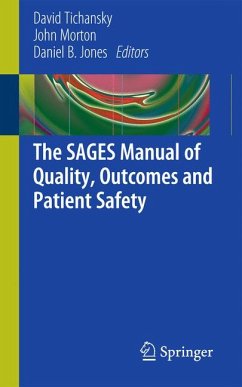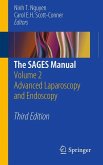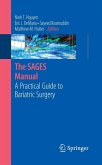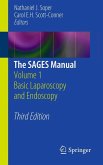The SAGES Manual of Quality, Outcomes and Saftey concisely summarizes important concepts to improve patient care at a systems level. While the focus is on advanced laparoscopy and innovative technology, the principles and examples in this book can be useful across disciplines and subspecialties. The volume sheds light on issues and behaviors both pre-op, intra- op and post-op that will decrease adverse outcomes and improve quality of care. No other book in General Surgery promotes team work, communication and better practices like The SAGES Manual for Quality, Outcomes and Safety.
Dieser Download kann aus rechtlichen Gründen nur mit Rechnungsadresse in A, B, BG, CY, CZ, D, DK, EW, E, FIN, F, GR, HR, H, IRL, I, LT, L, LR, M, NL, PL, P, R, S, SLO, SK ausgeliefert werden.









